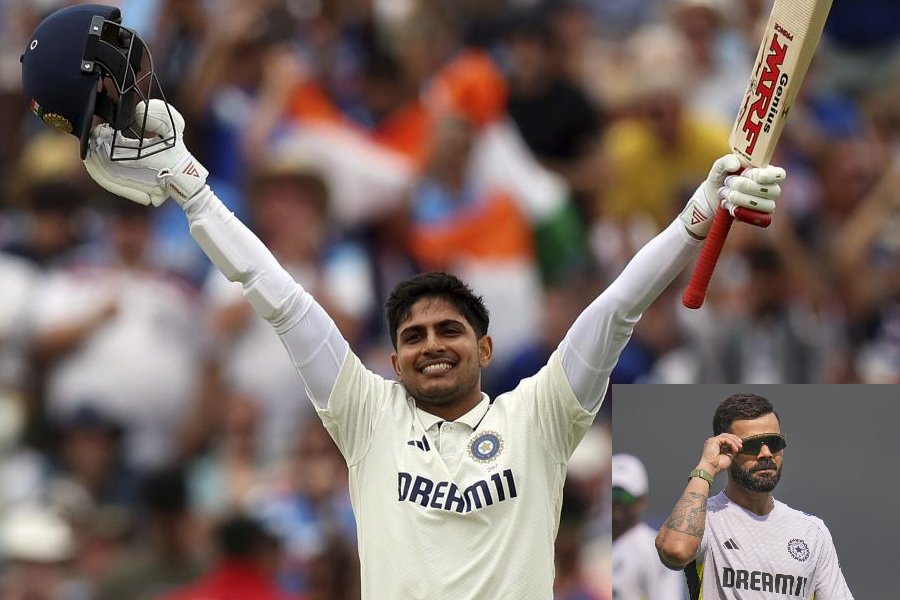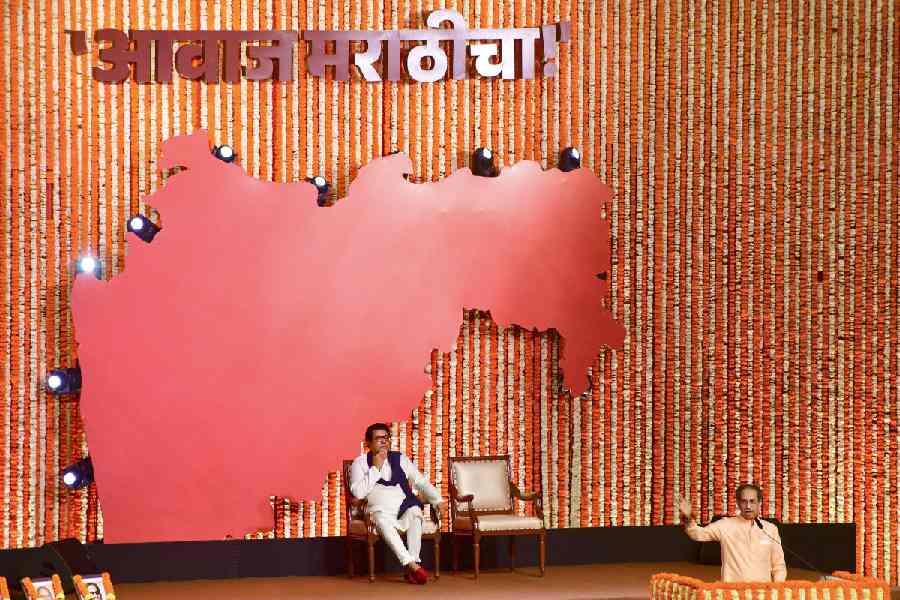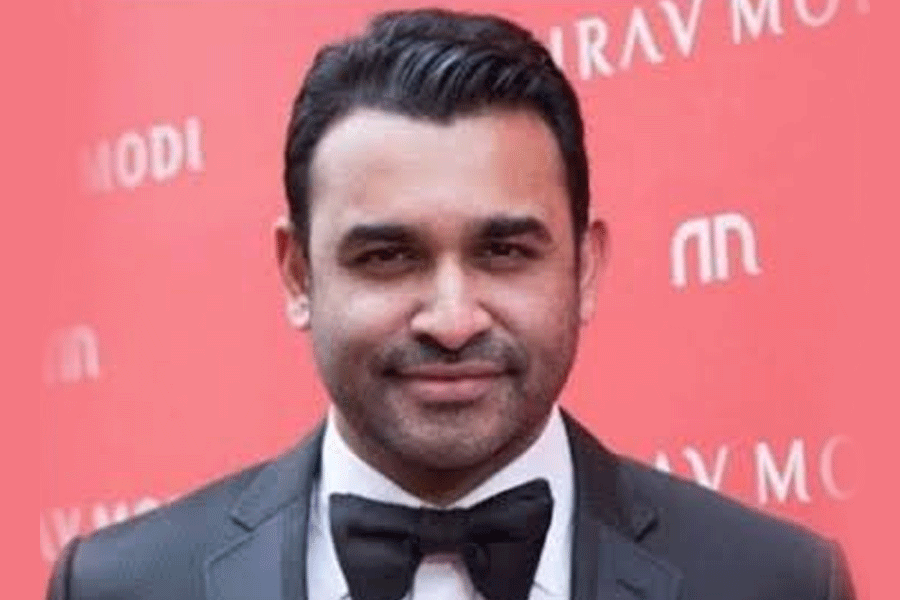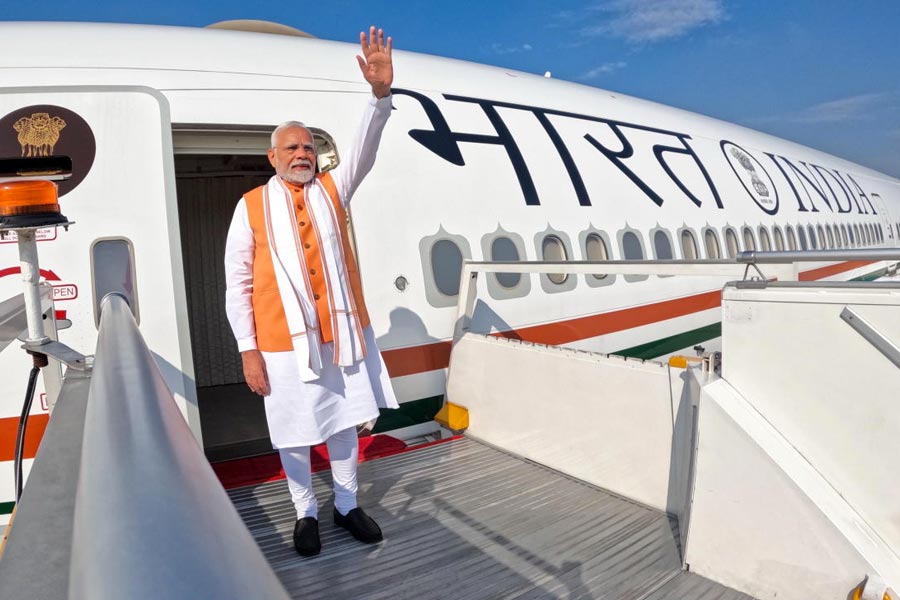 |
| The exhibition of Khaled Chowdhury’s drawings and illustrations. Picture by Sanjoy Chattopadhyaya |
Drawings and illustrations by set designer Khaled Chowdhury were on display at Gaganendra Pradarshashala recently, organised by NGOs Aabheri and Narayan Sanyal Anuragi Samiti.
For theatre enthusiasts this was a fine opportunity to see glimpses of this pioneering stage personality’s artistic skills and aesthetic sensibilities in the early poster drawing, card designs and book cover assignments, from around 1946.
“He has designed around 15,000 covers, but few of them are available now. I am trying to collect as many as possible and build an archive,” said Pradip Datta, one of the organisers.
Depicting an entire story or poem in the limited space of a book cover had taught Chowdhury to effectively use painting tools like lines, colour and form for the remarkable sets of Raktakarabi, Putul Khela, Kaaler Jatra, Pagla Ghoda or Sovajatra.
Each cover uses a different style. While the cover design for Nabanna is realistic, he uses a photograph of singer Debabrata Biswas for the cover of the original Rudhhosangeet, and on the cover of Dibaratrir Kabya, the flame-like figure of a girl dances much to the wonder of the blue-faced hero.
As in his sets, Chowdhury uses several techniques in his book covers — from patachitra and kantha to abstract forms.
His drawings during an illness-induced hallucination in 1984 show his involvement with theatre.
Khaled Chowdhury is 90 years old now and wishes his eyesight would allow him to continue drawing. When asked which of his talents he likes most, he says that like Dhritarashtra he cannot choose between his many children
“They are all alike.” But whereas book covers were mainly a means of livelihood, work for theatre (“since theatre never made any money”) like designing sets, costume, tickets, publicity material and even music, was done from a deeper urge.










